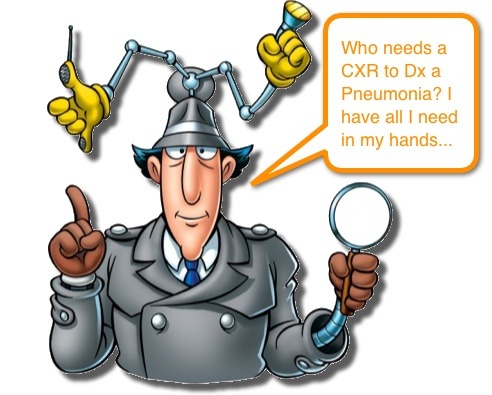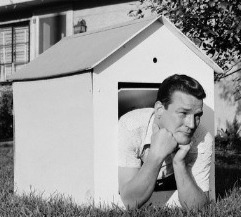Pneumonia Detection
Over time we all become quite confident in our clinical exam, which is routinely justified. Occasionally, however, we do have to take a step back and ask ourselves whether our detective skills are refined enough to make the diagnosis all of the time. In pediatric emergency medicine, we are accustomed to being humbled by a condition presenting in an occult fashion. Pneumonia is a great example of this fact.
Personal Disclaimer: When my daughter was 6 years old, she had a fever for 4 days and the most ridiculously miniscule cough. My wife worried dutifully. I ignored much of it, until I was “convinced” to listen to my daughter’s chest. No abnormalities heard. She continued with fever for another 2 days… lungs still sounded normal… got a CXR… had a HUGE RUL lobar pneumonia that you could see from outerspace. Now I still sleep outside.
Pediatric Pneumonia
- Pediatric pneumonia still comprises significant morbidity and mortality
- > 2 million children (< 5 yrs) die each year from pneumonia worldwide.
- This is more than AIDS, malaria and tuberculosis combined (see http://www.who.int/mediacentre/factsheets/fs331/en/)
- Most often the culprits are Streptococcus peumoniae, atypical infections, and Haemophilus influenzae.
- See this Morsel for a review of some of the therapeutic considerations.
- See this Morsel for potential complication of pneumonia.
Clinical vs Radiographic Diagnosis
-
PRO Clinical Diagnosis
- The physical exam and history are the foundation upon which we make all of our medical decisions.
- The diagnosis of pneumonia is often noted to be a “Clinical” one… and being someone who enjoys not ordering tests, I like this idea.
- The World Health Organization lists the following as being classic signs of pneumonia:
- Tachypnea
- Cough
- Fever
- Chills
- Annorexia
- Wheezing
- Many kids who have classic H+P for pneumonia and who improve when placed on antibiotics do not have radiographic abnormalities (so a CXR may have been falsely normal).
- Many places lack the resources to obtain a CXR… hence the WHO’s attempt to define clinical parameters.
- An infiltrate on CXR does not tell you whether it is bacterial or viral or other (problem with getting information that the relevance of that information is unclear).
-
PRO Radiographic Diagnosis
- When compared against CXR, the clinical findings advocated by WHO have poor sensitivity (see http://www.ncbi.nlm.nih.gov/pubmed/22333702).
- So while Clinical Diagnosis would seem to favor over treatment (unnecessary antibiotic administration), there is evidence that it can lead to under-treatment and missed cases.
- A recent study demonstrated that ~1/5 of cases of radiographic pneumonia had only fever and no other symptoms (Pediatr EMer Care 2013; 29: 893-896).
- The same study found that ~1/4 of the cases had normal physical exams.
What to do?
- Unfortunately, this is another example of our jobs being difficult… but would we have entered this realm if it was easy?
- The goal is to strike a balance between capturing the significant infections (and preventing the associated morbidity and mortality) and not handing our antibiotics like they are candy.
- In older children, > 6 years of age, your physical exam appears to be more reliable.
- Be more suspicious of your exam in younger children… PARTICULARLY when they have prolonged fevers (>4 days).
- If you have access to CXR and are evaluating a child with prolonged fever but with an unexciting physical exam, think twice before simply dismissing the possibility of pneumonia.
- Also, when your significant other tells you that he/she thinks you should listen to your kid’s chest and you hear no abnormalities, don’t be so cavalier at dismissing the possibility of pneumonia… unless you like sleeping outside…
Ayalon I, Glatstein MM, Zaidenberg-Israeli G, Scolnik DMB, Tov AB, Sira LB, Reif S. The Role of Physical Examination in Establishing the Diagnosis of Pneumonia. Pediatric Emergency Care: August 2013; 29(8): 893–896.




[…] we have discussed the issues that surround making the diagnosis of pneumonia. We have also touched on some complications and interesting pediatric findings. Additionally, […]
[…] Pediatric pneumonia management at Pediatric EM Morsels […]